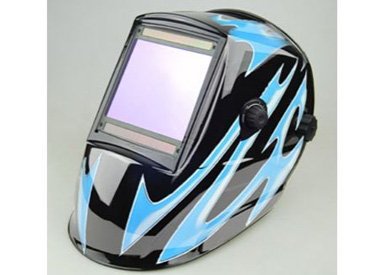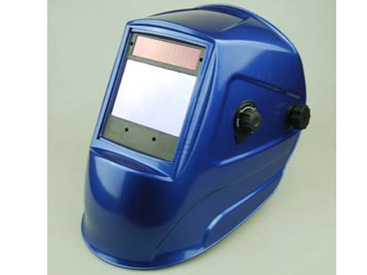Part of the welding equipment when starting welding training is the welding shield. Choosing the right welding shield will not only keep the welder safe and comfortable in the workshop but will also improve productivity and weld quality. Here are some of the factors to consider when choosing a welding helmet.
How does a welding helmet work?
Arc welding produces three types of light that can harm a welder's eyes: ultraviolet, infrared, and visible light.2 Welders are also at risk of being burned by sparks and hot molten metal. Welding helmets are designed to protect the welder's face and eyes from these hazards.

Welding Helmet
The most basic helmet consists of a non-combustible face shield which is fixed to the welder's head by means of adjustable straps. A rectangle is cut out from the shield where the welder's eyes are located. Within this rectangle is a lens covered by a protective screen. The lens is coated and darkened to protect the welder's eyes from the various harmful rays emitted by the electric arc. The higher the level of shading, the darker the color and the more light is filtered.
One of the first things to check when choosing a welding hood is that it has been tested and approved by the American National Standards Institute (ANSI). This will ensure that the helmet protects you. Look for ANSI Z87.1 for face and eye protection.
4 key factors to consider when choosing a welding helmet
Choosing the best welding helmet for your specific needs can be overwhelming. With so many brands and sources of information available, it can often be difficult to determine which welding helmet is right for you. To help narrow it down, the Hebei Machinery team recommends that you consider the following four important factors when choosing a welding helmet or welding PAPR.
1. Large field of view: advanced optics
Simply put, the better you can see, the better your weld will be. Look for a welding visor with a large field of view and advanced optics that allow you to easily see contours and edges both when welding and when setting up. A clearer view of the melt pool allows you to place each electrode precisely - which means higher quality and greater efficiency.

Auto-Darkening Welding Helmet
2. Welding helmet comfort
You spend most of your work week under your bonnet - so why not be comfortable? The fully adjustable headband with multiple adjustment points and even weight distribution makes it suitable for tailoring.
3. Performance: how powerful is the lens?
Contrary to popular belief, the number of photoelectric sensors that an auto-darkening welding helmet has is irrelevant, as long as they consistently detect the welding arc. The question is therefore not how many sensors the helmet has, but how powerful is the lens?
4. Versatility of the welding helmet
Welding hats should be suitable for a variety of different situations - because no two jobs are the same. You should consider the welding helmet that suits your specific application and/or site requirements. Whether you need head protection, a front flap visor for frequent grinding, or reliable breathing protection - you shouldn't compromise by getting a helmet that only fits half the time.
If you want to get more information about the auto-darkening welding helmet, welcome to contact us today or request a quote.







